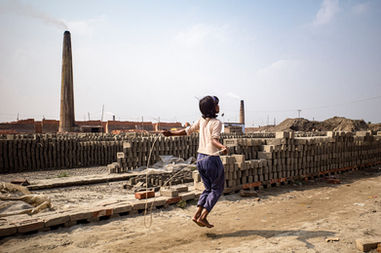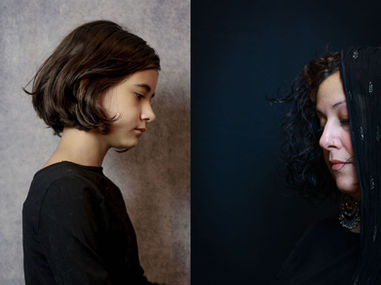
PICTORIAL STORY
October 11, 2023
THE STRANDED PAKISTANIS
Photography and story by Anwar Ehtesham
For centuries people have moved from one part of the world to another in search of a better life. Unfortunately, in some cases these journeys have ended with the unfortunate individuals becoming stateless and with no hope for a better future. This is the sad story of the Biharis, or Urdu-speaking people, who have been stranded in Bangladesh for almost five decades and are now a forgotten population of over 300,000. This population has been denied their chance at a decent life due to political unrest that has crippled their country of origin. They are a people without a nation, and their struggles remain largely unheard.
-min.jpg)
The Geneva Camp, also known as the Bihari Camp, is a symbol of the history and culture of these people. In pre-independence India, they were a Muslim minority in the region of Bihar. When the partition occurred in 1947, many of them moved to what was then East Pakistan. After a civil war between East and West Pakistan broke out in 1971, these Biharis sided with West Pakistan, and subsequently East Pakistan became an independent state of Bangladesh. Despite having been loyal to Pakistan, they were denied citizenship, and as a result they have been rendered virtually stateless and abandoned, labeled as “Stranded Pakistanis”.
Between 1974 and 1992, approximately 175,000 'Biharis' were relocated to Pakistan. For over 40,000 people packed in an area slightly larger than an acre, Geneva Camp continues to be their home. Finally, in 2008, a court in Bangladesh granted citizenship to all of the camp's residents born after 1971. The national identification cards they received gave them voting rights. However, this did not mean that their lives had improved very much, and they still lacked basic rights such as passport acquisition and access to employment opportunities or even public schools. This has left the Biharis stuck in a never-ending cycle of displacement and poverty.
In the scope of my photo documentary, I place a strong emphasis on portraying the intricacies of their daily lives, shedding light on the conditions they inhabit day to day, and delving into the diverse range of professions they engage in to make a living. However, a particularly noteworthy aspect of my project centres around casting a spotlight on the children residing within the camp. These young individuals, children of Bihari parents yet born as citizens of Bangladesh, hold a unique position that intricately weaves together their historical background and their present circumstances. By focusing on these children, I aim to provide a multifaceted and comprehensive narrative that captures the essence of their experiences and the broader context of their lives within the camp.
The conditions in the Bihari camps of Dhaka are dire, with houses that are usually no larger than 2.4m by 2.4m (8ft by 8ft), separated by 61cm wide passageways that are shared by the residents, goats, and chicken. To make space for possessions, beds are often raised up above the floor. When it rains, the camp floods, including the toilets, and the floors are weak and prone to crumbling due to gaps in the walls and under stairways. Additionally, electrical lines hang in webs above the hallways, frayed and in a state of disrepair.
It is a heartbreaking story that has been largely forgotten in today's turbulent times. Yet it is a reminder to the world of how tragedy can befall any group of people in a matter of years, leaving them virtually stateless and without a voice.

Anwar Ehtesham's photo documentary shines a light on the almost forgotten plight of the Biharis, a population that has been denied their chance at a better life due to political unrest in their native country. His work captures the beauty of human emotion in all its rawest forms in the face of adversity and offers an insight into the complexity of both the lives of the Bihari people and their relationship with their environment. His photographs take us on a journey, exploring the unique stories that make up this forgotten population and immersing us in the struggles of those living in the Bihari camps of Dhaka. We must continue to tell the story of these people and raise awareness of their plight. To learn more about Anwar and his work, we encourage you to visit his social media.

The views, thoughts, and opinions expressed in the text belong solely to the author/s, and are not necessarily shared by The Pictorial List and the team.















































